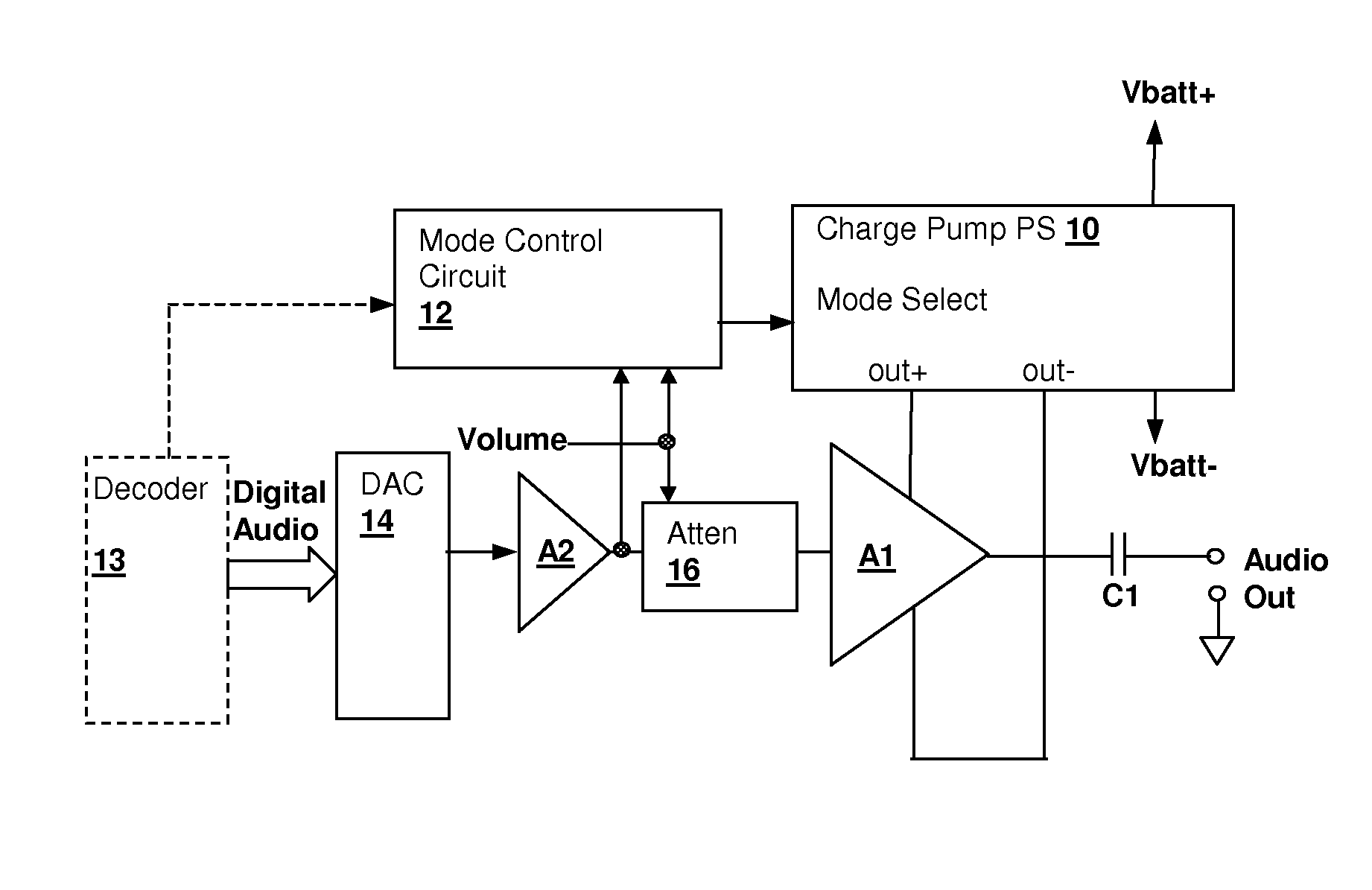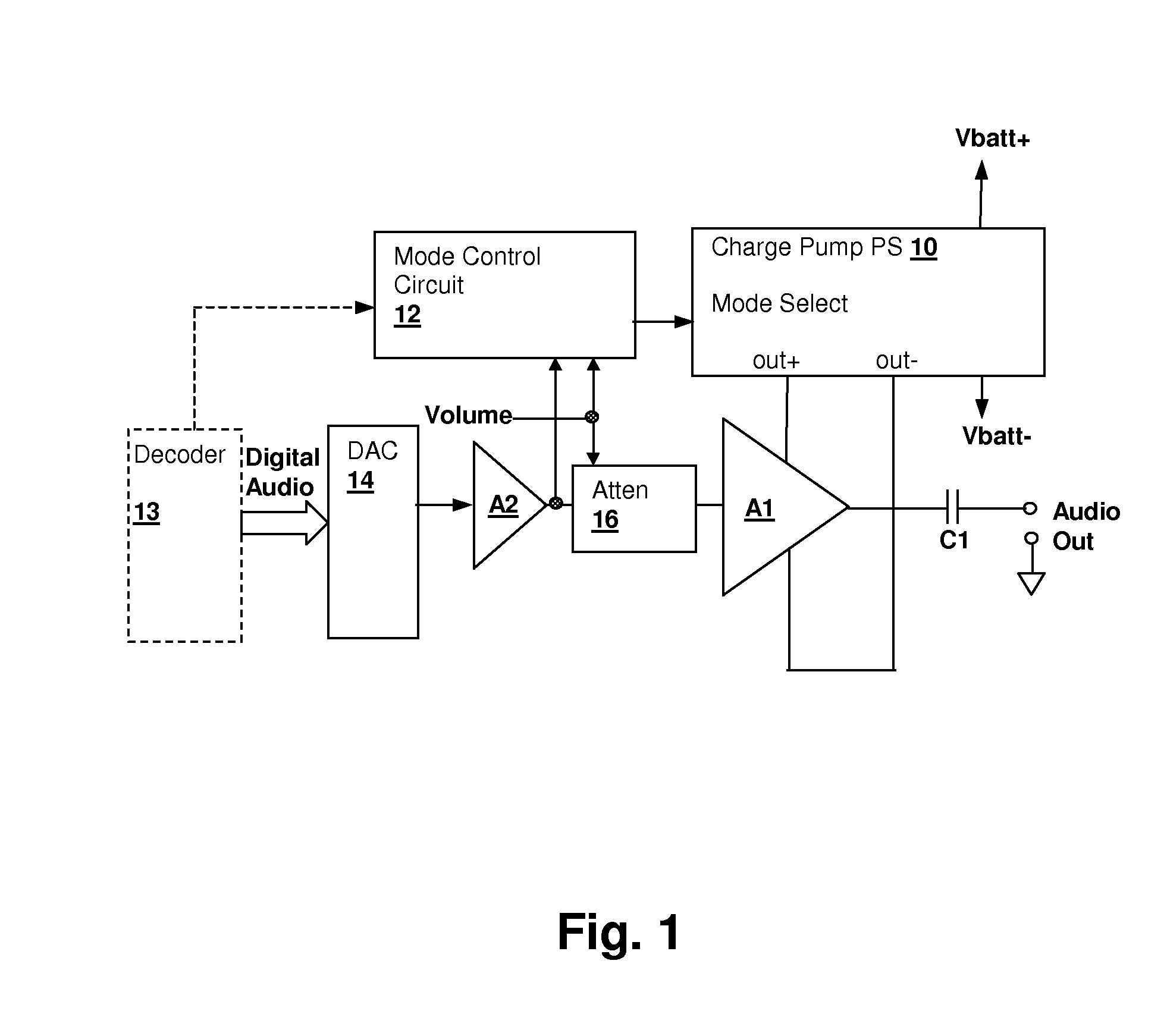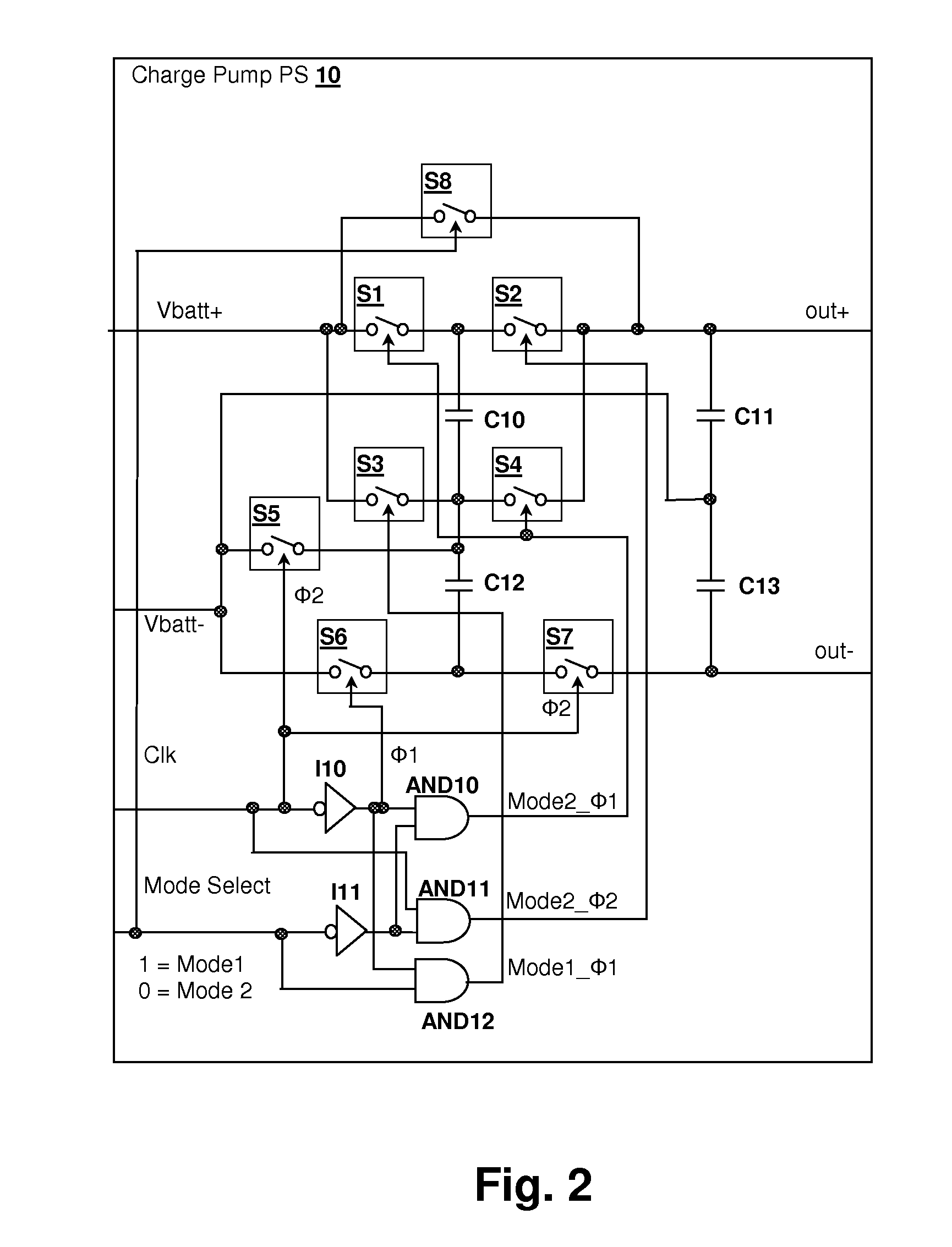Method and apparatus for controlling a selectable voltage audio power output stage
- Summary
- Abstract
- Description
- Claims
- Application Information
AI Technical Summary
Benefits of technology
Problems solved by technology
Method used
Image
Examples
Embodiment Construction
[0016]The present invention encompasses a control method and apparatus for selecting a power supply voltage supplied to an audio power amplifier. The voltage of the power supply provided to the final power amplifier stage is selectable and is set in conformity with either an expected or actual signal level of the audio signal being amplified, so that at signal amplitudes that do not require the maximum power supply voltage, the power supply voltage is reduced to conserve power. For example, when amplifying a signal having typical maximum amplitude −6 dB below occasional peaks referenced at 0 dB, the power supply voltage of the final amplifier stage can be reduced by a factor of two during intervals between the above-described peaks, without causing clipping. The result is a potential reduction in power consumption by a factor of four and a reduction in power dissipation by at least that factor over that of an amplifier that does not have a selectable power supply. The control mechan...
PUM
 Login to View More
Login to View More Abstract
Description
Claims
Application Information
 Login to View More
Login to View More - R&D
- Intellectual Property
- Life Sciences
- Materials
- Tech Scout
- Unparalleled Data Quality
- Higher Quality Content
- 60% Fewer Hallucinations
Browse by: Latest US Patents, China's latest patents, Technical Efficacy Thesaurus, Application Domain, Technology Topic, Popular Technical Reports.
© 2025 PatSnap. All rights reserved.Legal|Privacy policy|Modern Slavery Act Transparency Statement|Sitemap|About US| Contact US: help@patsnap.com



